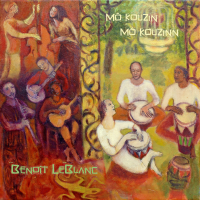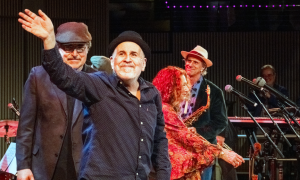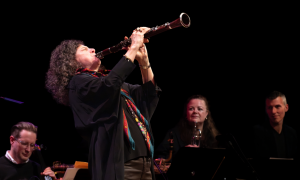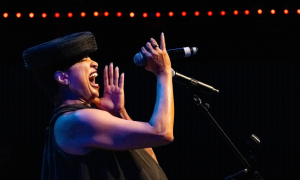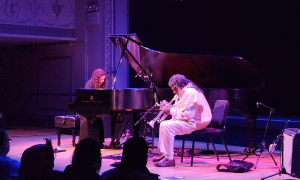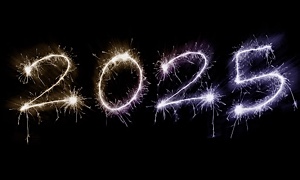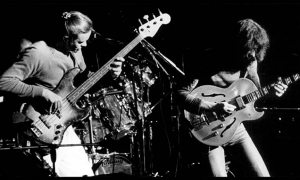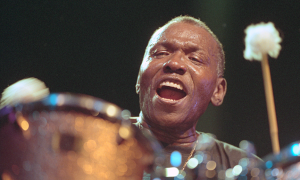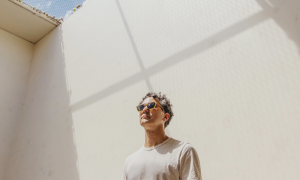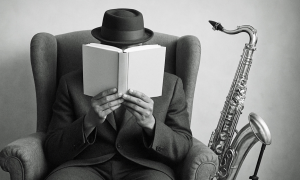Home » Jazz Articles » Live Review » Sonore: Ukrainian Debut
Sonore: Ukrainian Debut
Sonore
Maria Zankovetska Drama Theatre
Lviv, Ukraine
December 14, 2008
This year Jazz Bez, one of the biggest jazz festivals in Ukraine, had a final episode that was a performance by one of the most radical jazz projects—Sonore: three saxophonists, each representing his own generation, his own country, his own musical ethos. The personnel? The oldest, without a question, living free-jazz legend—the jazz-berserk German Peter Brotzmann; alongside him, Chicagoan industrious saxophonist Ken Vandermark, who can easily earn a page in the Guinness records book for his numerous projects; and also one of the most expressive voices of improvised music—Sweden-born Mats Gustafsson.
The concert was promoted as a concert of the best saxophonists of 2008. Well, some might find such billing credible, but for others, at least those who bought that slogan without knowing what Sonore is, the performance was a bit of a shock. Some people left the concert, but their quantity was outnumbered by those who stayed and who honestly gave their ovations.
One and one-half hours of pure unplugged sound and the fantastic acoustics of the Maria Zankovetska Drama Theatre in Lviv made music into an almost touchable object. The resonance between musicians at some points practically caused an upheaval to the building itself.
Sonore's music might be labeled as very hard to comprehend, a true cacophony. Yet the trio's music, which is based on a connection between musicians on the deepest level and with flawless intercommunication, grew out of their mutual work in Brotzmann's Chicago Tentet. The interplay of three horns makes them into some kind of tri-fold musical instrument—to the point that listening becomes a wondrous and challenging task.
Musicians didn't play some pre-defined roles, as could be assumed for example when Gustaffson's baritone saxophone became something of the rhythm instrument. His saxophone became a whole spectrum of instruments, or was transformed into a unique sonic device beyond its customary screams and whinings. Vandermark, especially when playing clarinet, was making music that was frequently more coherent than usual, thus completing the whole picture. Nevertheless, Brotzmann, as the older comrade in this trinity, showed in his plqying that he had not lost his machine-gun articulations after all these years.
Each reedist took on several instruments: Brotzmann, alto and tenor saxophones and clarinet; Vandermark, clarinet and tenor saxophone; Gustafsson, baritone saxophone and flutphone. Even after an exhaustive tour, the musicians played out with all they had, each with his own unique style, with his own elocution and timbre. Every moment one could see the great tension on their faces—a tension that comes from "co-playing" and "co-listening." The performance became a demonstration of what is actually meant by a word discredited by its "yuppi' context—the "synergy" word. But there's no better word for what happens when one plus one plus one equals something bigger than three.
Some unsatisfied listeners said the concert lacked any melody. True, most of the time the performance comprised very "atonal" playing. But the music didn't lack order in its production of musical texture, even at a time of the most disparate (and disparate) group improvisations. And during the rare times when the musicians played melody and conventional harmonies, the results were of such a finished quality that some of the best mainstreamers (if any?) would be challenged to do as well, especially on "Two Birds In A Feather," when Brotzmann showed his accomplished mastery of the saxophone and his overwhelming vibrato.
The concert itself consisted of five compositions plus two encores demanded by the audience. And after the second encore, with all three musicians side-by-side fusing together, three saxophones as one, what remained was a tremendous pulse exploding like thunder with Gustafsson's baritone punctuating the end. But it was less a period than an ellipses...
Tags
PREVIOUS / NEXT
Support All About Jazz
 All About Jazz has been a pillar of jazz since 1995, championing it as an art form and, more importantly, supporting the musicians who make it. Our enduring commitment has made "AAJ" one of the most culturally important websites of its kind, read by hundreds of thousands of fans, musicians and industry figures every month.
All About Jazz has been a pillar of jazz since 1995, championing it as an art form and, more importantly, supporting the musicians who make it. Our enduring commitment has made "AAJ" one of the most culturally important websites of its kind, read by hundreds of thousands of fans, musicians and industry figures every month.











